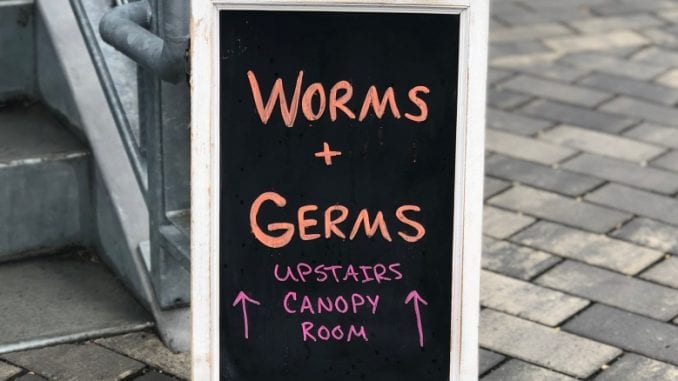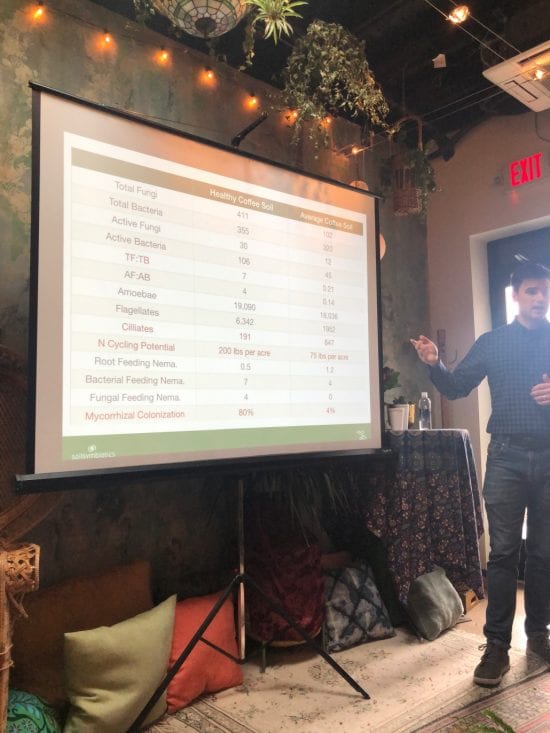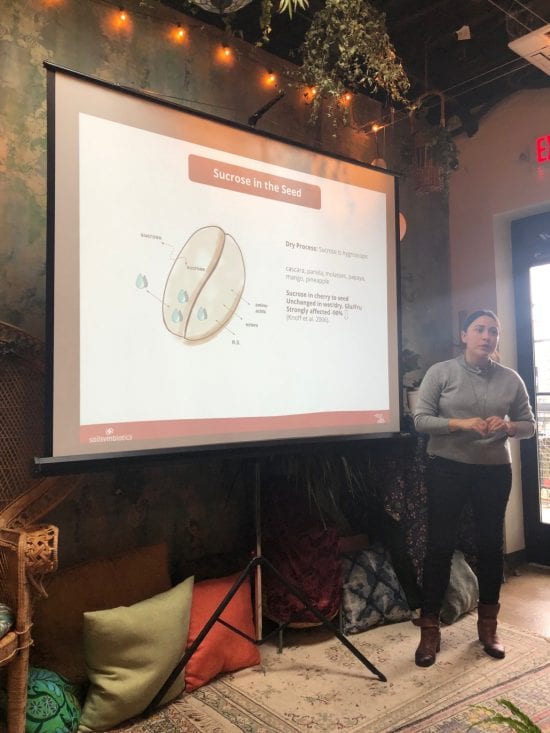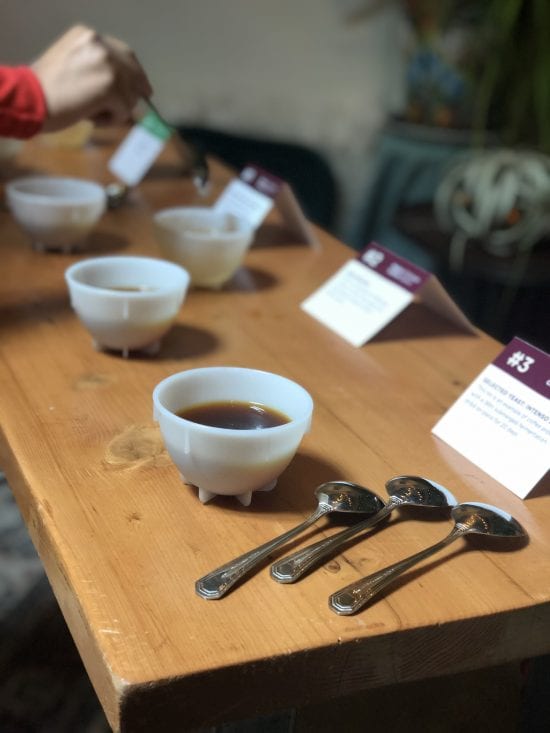
Worms and Germs, an event hosted by Lucia Solis and Sam Knowlton, looked at the relationship between soil health, fermentation, and coffee quality.
BY ASHLEY RODRIGUEZ
BARISTA MAGAZINE ONLINE
Where does quality in coffee come from? This is a huge topic within the coffee industry, and depending on what space you occupy, you might point to a number of different factors—perhaps elevation, or varietal, or roast profile. But Lucia Solis and Sam Knowlton want to go even further back.
In their joint talk, Worms and Germs, which took place at Boston’s Bow Market in April while the specialty-coffee community was gathered in town for the Specialty Coffee Expo, Lucia and Sam explored the relationship between soil health and fermentation and how both can dramatically change the quality of a coffee. You might already know Lucia—she’s a coffee fermentation specialist and has presented her work at a number of coffee events—but Sam is just as invested in coffee, working as an agronomist helping farmers improve the quality of their products.

For so long, coffee folks have pointed to aforementioned factors like elevation and varietal as the sources of quality, but these characteristics are often out of the hands of farmers. In their work, Lucia and Sam work on helping farmers control the variables they can change, like the bacteria and fungi living in their soil, and how they process their coffee.
Sam took the stage first, talking about the conditions in which coffee plants grow and thrive. “At 76 degrees, plants turn from photosynthesis to photorespiration,” he said, noting that the latter process is wasteful for plants. He suggested that farmers consider non-invasive shade plants and the power of biodiversity to improve plant health and encourage proper plant metabolic processes.

Sam then showed a chart illustrating what healthy soil looks like versus the typical soil content of a coffee farm—and showed that most soil is lacking in essential nutrients and a proper fungi-to-bacteria ratio.
Then, Lucia took the stage. “Usually, I avoid talking about sweetness, but that’s what I wanted to cover today,” she started. She talked about the sucrose inherent in coffee seeds, and how the amount of sucrose in a coffee seed stays relatively unchanged due to processing, citing a study that said, “sucrose in cherry to seed … unchanged in wet/dry (processing).”
What was most compelling about Lucia’s talk was how she broke down simple concepts, like the fact that a coffee seed is still alive until it’s milled, and that there are active processes going on in the coffee seed until that happens—and that’s one of the reasons soil health and fermentation techniques matter.

Afterward, Lucia and Sam brought out a few coffees to cup, showcasing the differences in soil health and fermentation techniques. The most interesting coffees were from one farm in Brazil with a variety of different elevations. The winner on the table was the lowest-grown coffee, which was the plot of land Sam worked on. It was the sweetest coffee on the table, and Sam mentioned to the group that the farmer had give that coffee a nickname so people wouldn’t be deterred by its low elevation—many were fooled.
I’m sure I’m glossing over some of the key takeaways—there was so much vital information provided by both Sam and Lucia, and if anything, the takeaways were that many of the traits that we attribute to coffee as contributors to flavor that are unchangeable, like elevation and varietal, aren’t the only factors to consider. By looking at soil health and fermentation, farmers all over the world, regardless of where their farms are, can improve quality and control consistency.

